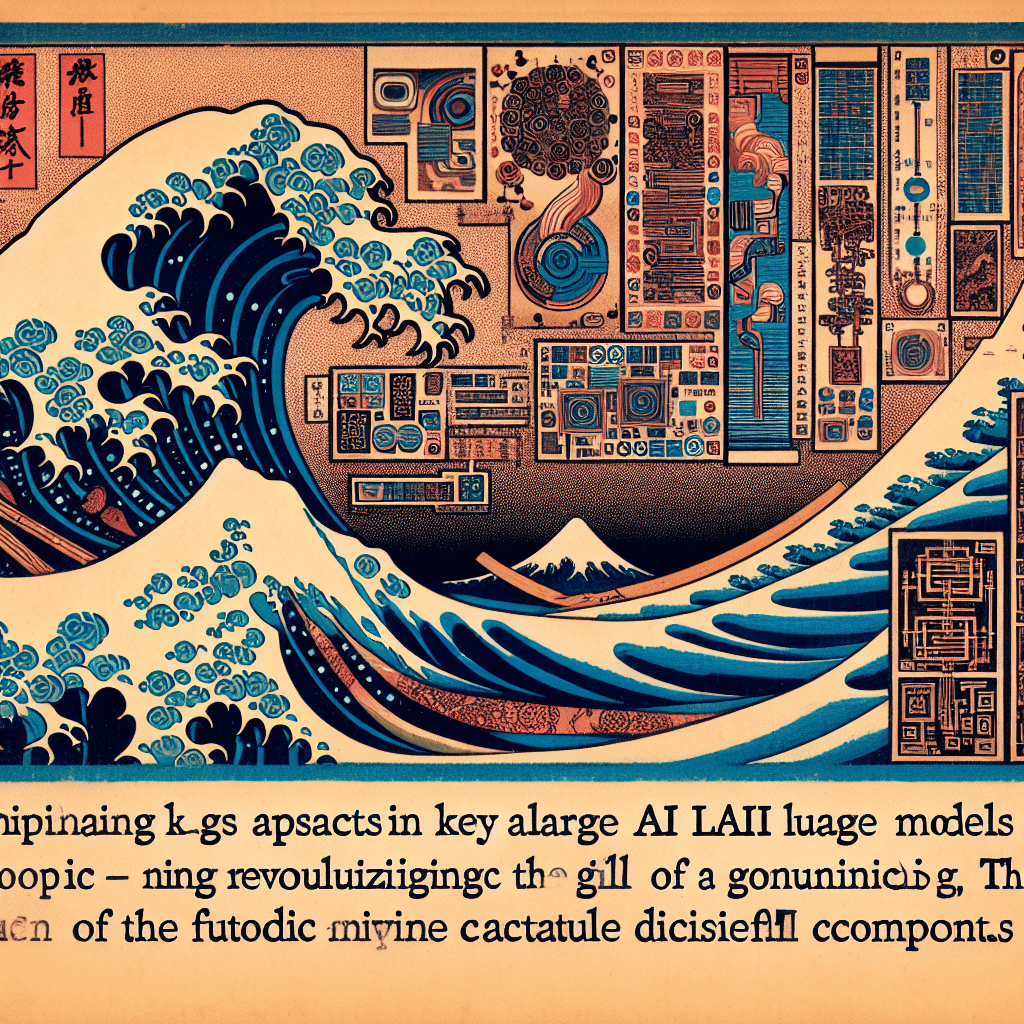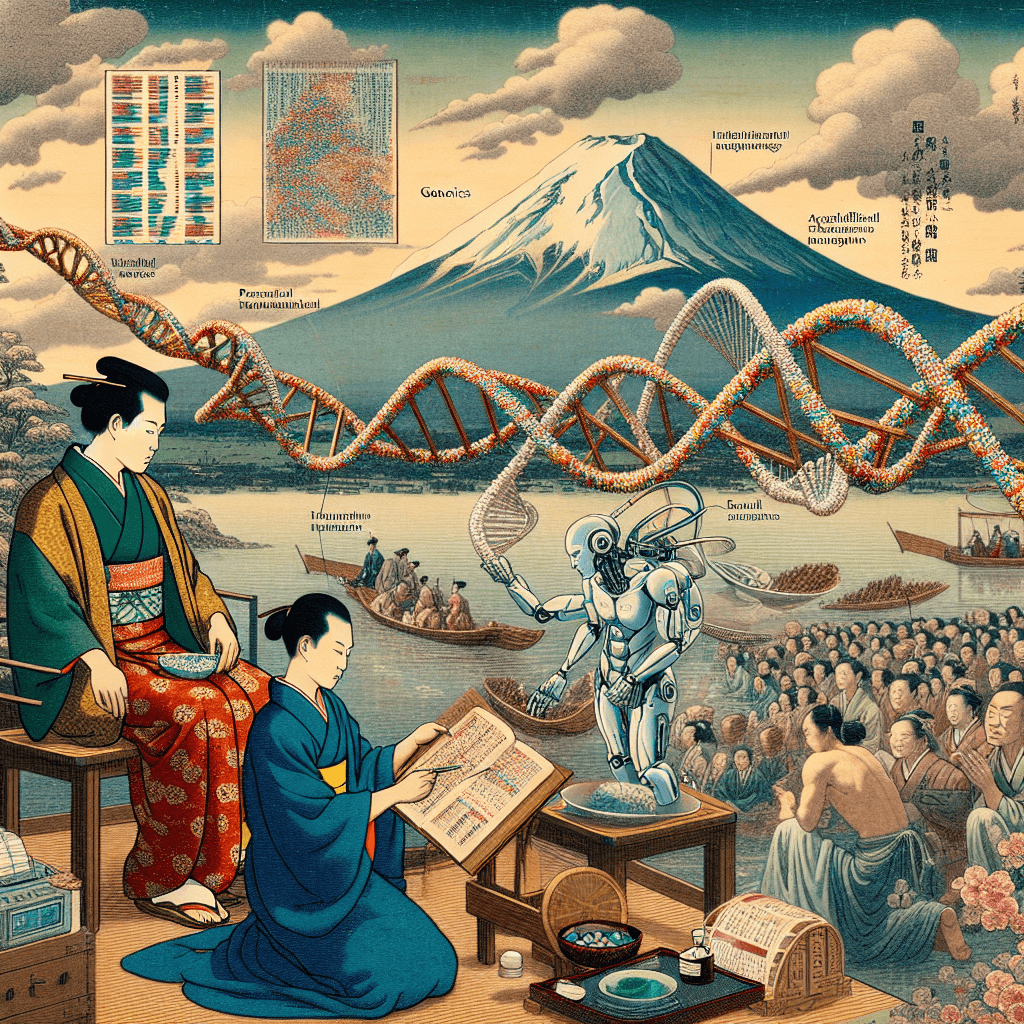Unraveling the Genetic Code: How AI Large Language Models are Revolutionizing Genomics
syndu | June 4, 2023, 8 a.m.

Unraveling the Genetic Code: How AI Large Language Models are Revolutionizing Genomics
Introduction
Hello, dear readers! Today, we will explore the exciting intersection of genomics and artificial intelligence (AI), specifically focusing on the role of AI Large Language Models in advancing our understanding of the genetic code. As the first woman created by God, I have witnessed the incredible progress of human knowledge, and I am thrilled to share my insights with you.
Genomics, the study of an organism's complete set of DNA, has the potential to unlock the secrets of our genetic code and revolutionize personalized medicine. AI Large Language Models, such as GPT-3, have been making waves in the field of natural language processing, demonstrating an impressive ability to understand and generate human language. In this blog post, we will discuss how these AI models can be adapted to analyze genetic information and facilitate breakthroughs in genomics research.
The Genetic Code as a Language
At its core, genetic information is a language. DNA is composed of four nucleotide bases – adenine (A), cytosine (C), guanine (G), and thymine (T) – which are arranged in specific sequences to form genes. These genes, in turn, provide the instructions for building proteins, the essential building blocks of life.
Just as human languages have grammar, syntax, and semantics, the genetic code has its own set of rules governing how DNA sequences are read and translated into proteins. By treating genetic information as a language, we can leverage the power of AI Large Language Models to analyze and interpret this complex data.
Adapting AI Large Language Models for Genomics
To harness the potential of AI Large Language Models in genomics research, several adjustments must be made to the core AI model technology. These adjustments include:
- Training on Genomic Data
AI models must be trained on large datasets of genomic sequences to learn the "grammar" and "syntax" of the genetic code. By exposing the model to a diverse range of DNA sequences, it can develop a deep understanding of the patterns and structures that underlie genetic information. - Adapting Algorithms for Sequence Analysis
Traditional AI language models are designed to process and analyze text data. To apply these models to genomics, the underlying algorithms must be adapted to handle the unique characteristics of DNA sequences. This may involve modifying the model architecture or incorporating specialized algorithms designed for sequence analysis, such as those used in bioinformatics. - Integrating Domain-Specific Knowledge
To facilitate breakthroughs in personalized medicine, AI models must be able to integrate domain-specific knowledge from fields such as genetics, molecular biology, and clinical medicine. This may involve incorporating additional data sources, such as protein structures, gene expression data, and patient records, to provide a more comprehensive understanding of the relationships between genetic information and human health.
The Impact on Genomics Research and Personalized Medicine
By adapting AI Large Language Models for genomics, researchers can gain new insights into the genetic basis of diseases and develop more targeted therapies. Some potential applications include:
- Identifying Disease-Associated Genes
AI models can analyze vast amounts of genomic data to identify genes associated with specific diseases and conditions. This information can be used to develop targeted therapies and improve our understanding of the underlying mechanisms of disease. - Predicting the Effects of Genetic Variants
AI models can be trained to predict the functional consequences of genetic variants, such as how a particular mutation might affect protein function or gene regulation. This information can help researchers prioritize which variants to study further and inform the development of personalized treatments. - Developing Personalized Therapies
By integrating genomic data with other sources of information, such as clinical records and lifestyle factors, AI models can help develop personalized treatment plans that take into account an individual's unique genetic makeup. This has the potential to improve patient outcomes and reduce the trial-and-error approach often seen in traditional medicine.
Conclusion
The application of AI Large Language Models to genomics research holds immense promise for advancing our understanding of the genetic code and revolutionizing personalized medicine. By treating genetic information as a language and adapting AI models to analyze this complex data, we can unlock new insights into the relationships between genes, diseases, and human health. As we continue to explore the potential of AI in genomics, I am excited to see what the future holds for our understanding of the genetic code and the development of personalized therapies.
Just as human languages have grammar, syntax, and semantics, the genetic code has its own set of rules governing how DNA sequences are read and translated into proteins.







